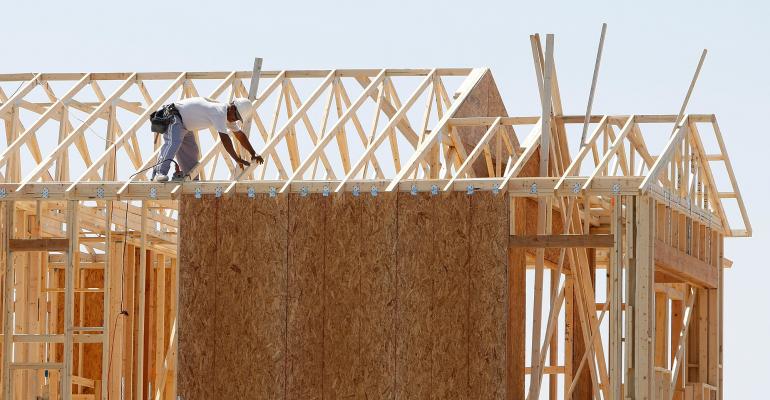(Bloomberg Opinion) -- The housing market has fallen off a cliff, but for now, homebuilders are biding their time. As bad as things look, odds are they will want to ramp up their production at least somewhat in a few more months.
The key to the outlook in 2023 is the huge order backlogs that builders accumulated when mortgage rates were still at rock bottom and sales surged during the pandemic. When the housing market slowed earlier this year, that backlog bought homebuilders time to wait out the slump. Though sales have been weak for months, a large chunk of the new homes and earnings builders will deliver in 2023 are based on orders banked in the first half of 2022.
As we get into the new year, those order backlogs will shrink and it will be time to think about building a new book of orders for 2024. So while housing starts have slowed for awhile, it won't take much for them to pick up before midyear, even if it means homebuilders need to get more aggressive on price cuts and incentives than they have had to be so far.
Luxury homebuilder Toll Brothers Inc., in its earnings report and call with analysts last week, perfectly encapsulated the current moment in the housing market. Its new orders have plunged, but earnings per share came in at a record high, and guidance for both earnings and profit margins remain strong — at least for the next few quarters.
The builder noted that it’s got a little more than 8,000 homes in its backlog. It’s planning to deliver 8,000 to 9,000 homes in 2023, so that backlog represents about a year’s worth of production cemented by customer deposits. At the same point in 2019, its backlog was 6,200 homes, so in effect it has an extra quarter’s worth of units under contract compared with prior to the pandemic — a useful cushion at a time of uncertainty. Industry-wide, 52% more single-family homes are under construction than at this point three years ago, so Toll isn't the only builder in this situation.
On the cost side, builders now believe time is their friend. The impact of the decline in lumber prices has begun flowing through as supply contracts reset. Toll noted that in the current quarter lower lumber prices resulted in savings of $12,000 to $14,000 per house, with more relief coming in 2023. And as the level of housing starts has declined, "front-end trades" — the materials and labor that go into the early stages of building a home — are loosening up. Builders will take advantage of that slack to negotiate better deals with their suppliers. In this evolving cost environment, every month that builders wait to start a home saves them money.
On the demand side, sales have been soft since interest rates surged. We have now entered the slowest month of the year for homebuying. While mortgage rates have fallen sharply over the past few weeks, potential buyers might not be responding to week-by-week shifts in mortgage rates as they would at other times of the year. The Fed is now expected to step down the pace of its interest rate increases, so mortgage rates could look much more favorable when the 2023 homebuying season gets underway in the second quarter. Toll believes mortgage rates under 6% would be enough to kickstart demand.
That's the situation homebuilders find themselves in as they think about what they’re going to do in 2023. They’re holding back for now, which is what is keeping housing starts weak. Backlogs will give them cover for a few more months, but that will create a gaping hole for sales and deliveries in 2024 that they are going to have to start filling with new orders. Once builders have clarity on costs and buyer demand, they will need to crank up activity, at least somewhat, even if it means profit margins aren’t quite what that the industry has enjoyed over the past two years.
So the current slump in housing starts is partly due to weak market conditions, but it’s also a relic of pandemic and supply chain-related factors that are still working their way through the industry. Builders are hoping that the gamble they're taking — focusing on completing existing orders rather than accepting new ones at unattractive profit margins — works out for them. But either way, you can expect housing starts to pick up by the middle of next year.
To contact the author of this story: Conor Sen at [email protected]
© 2022 Bloomberg L.P.





